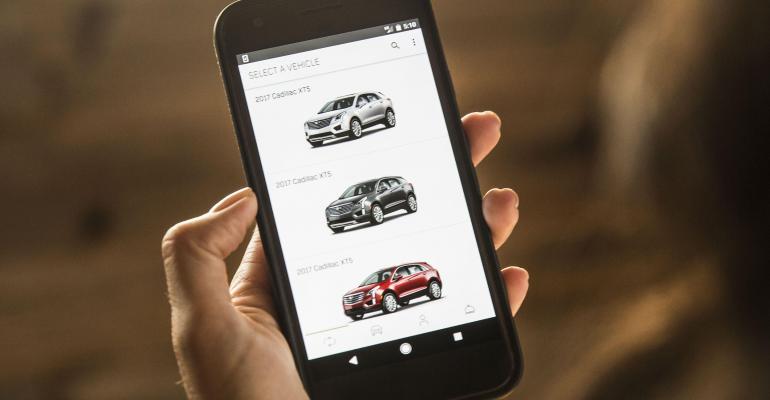Automakers have reasons to be concerned these days.
They’ve seen the popularity of sedans wither to the point that several of them have dropped the models from their lineup. Tariff threats have caused them to rethink how to ship products across borders. Attempts to enter emerging markets have been challenged by local market forces.
If all this weren’t enough, surveys indicate many young adults would just as soon use a ride-sharing service or live in an urban area that obviates the need for personal transportation.
From Loans to Leasing: A Brief History
For most of the 20th century, consumers who wanted a new automobile had only one way to obtain one: by purchasing it, either outright for cash, or by obtaining a bank loan (paid back with interest, of course).
As the private automobile was the second-most expensive consumer purchase after a home, most drivers couldn’t afford to walk into a dealership and plunk down the full purchase price, so loans were the order of the day.
Eventually the car makers themselves, sensing another profit opportunity, got into the auto loan business. Offering loans enabled them to make money on the car and the financing of it.
In the 1980s, a new sales concept emerged: leasing. Instead of ownership, the leasing model was akin to renting.
The lessee (driver) would put some money down and a monthly lease payment would be calculated based on annual mileage and depreciation. At the end of the lease, the lessee had the choice of either buying the car for a fixed price (its residual value) or returning it with no further obligation.
The gist of leasing is that the monthly payment represents only the portion of the vehicle’s value (the depreciation) that occurs while the driver possesses the car.
Leasing grew in popularity. For the consumers, monthly lease payments were lower than what they would typically pay each month for a car loan, meaning that drivers could afford more expensive cars.
For the car makers, leasing made their cars more attractive and helped increase sales, as long as they could manage the fleet of used off-lease cars. On the other hand, manufacturers also recognized that those turning in their cars when their lease was up had to drive something else, and many lessees just leased another new car. The consumer in turn got a new car and a new warranty about every three years. We saw this cycle continue for many years.
New Generation Makes Mark on Car Ownership
So, what’s going on now?
The current young generation who have just gotten or are about to get their driver’s licenses often don’t feel the same way about driving and car ownership as their parents and grandparents did.
Some blame the smartphone (“I’d rather be connected than be mobile”). Others look at the realities of stagnant wages, crowded urban areas and environmental concerns. Globally, the automobile manufacturers, while enjoying healthy sales short-term, are looking down the road with these factors in mind and wondering just who is going to buy their products in the long-term.
Several car companies are now piloting what are called subscription services, which may be inspired by ride-sharing services and all-in-one smartphone plans. These services move beyond purchasing and leasing to create a new kind of payment plan for owning a vehicle.
On the surface, subscription services look like restructured leases. The driver doesn’t own the vehicle, but instead makes a monthly payment. With these plans, the vehicle is covered by the manufacturers’ warranty and maintenance, repairs and even insurance are included.
The Pros and Cons of Subscribing to Cars
When it comes to subscription models versus leases, there are two key differences. First, there is no multi-year “contract” with a subscription plan.
Instead, after the initial 30-day period, the driver can cancel the subscription at any time. Second, with some advance notice, the driver can arrange for a different model car from the same manufacturer to be delivered and “swapped” for their current ride. Of course, subscription service details vary among car manufacturers. (We’ll look at those individual programs in my next column.)
Unique advantages like vehicle swaps and perks such as included insurance come with a price, of course. The monthly subscription fee is significantly higher than a traditional lease.
 At present, we’re seeing it range from $650 to $3,000, depending on make and included benefits. Now, before you conclude this whole idea is hogwash, keep in mind the current programs have been launched only by the higher-end brands, and the majority of these offerings are run as pilot programs to test the waters. (Wards Industry Voices contributor Richard Reina, left)
At present, we’re seeing it range from $650 to $3,000, depending on make and included benefits. Now, before you conclude this whole idea is hogwash, keep in mind the current programs have been launched only by the higher-end brands, and the majority of these offerings are run as pilot programs to test the waters. (Wards Industry Voices contributor Richard Reina, left)
As part of the pilot nature, the geographic locations are limited to a handful of major metropolises. Like with any new innovation, the long-term intent seems to be for automakers to fine-tune the details during the pilot phase and iron out the bugs so that the next wave of subscription services can trickle down to mainstream makes and models.
(One of the first brands to start a subscription service, Cadillac, says it is suspending the $1,800 a month BOOK by Cadillac at the end of the year.)
You might be asking, what makes these offers attractive to anyone, presuming one can afford $1,000, to $3,000 per month?
For one thing, model trades mean you could hypothetically drive a sedan for commuting, a convertible on sunny weekends and an SUV when the in-laws come to visit.
The insurance inclusion could be worth a bundle, especially if you live in an urban area or have younger drivers in the house causing you to pay sky-high premiums. Finally, for indecisive types, the month-to-month nature of the program lets you “try out” a manufacturer’s model lineup before signing up for a longer commitment.
Richard Reina is product training director for CARiD.com, an online automotive aftermarket marketplace.





